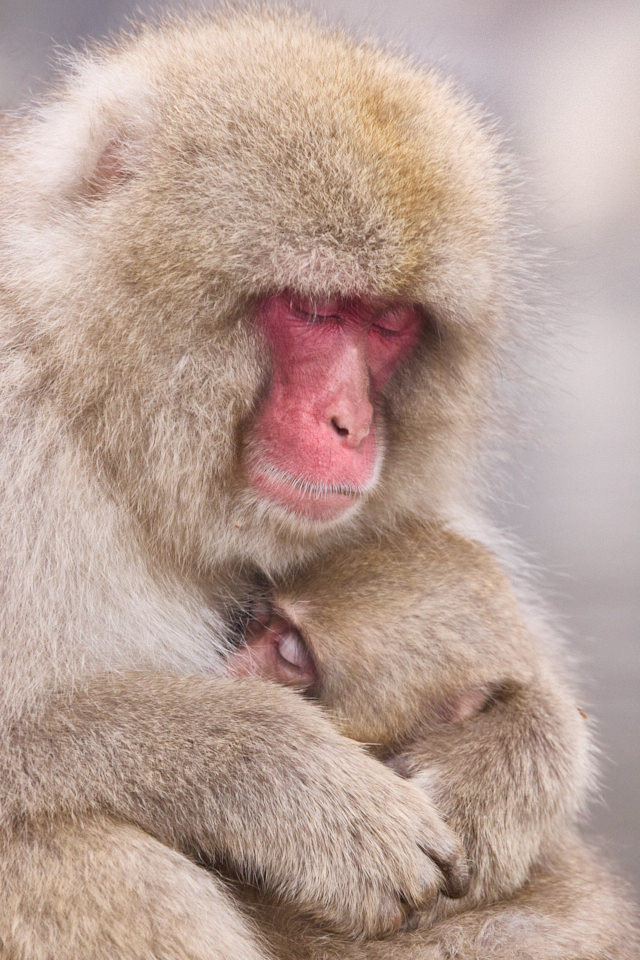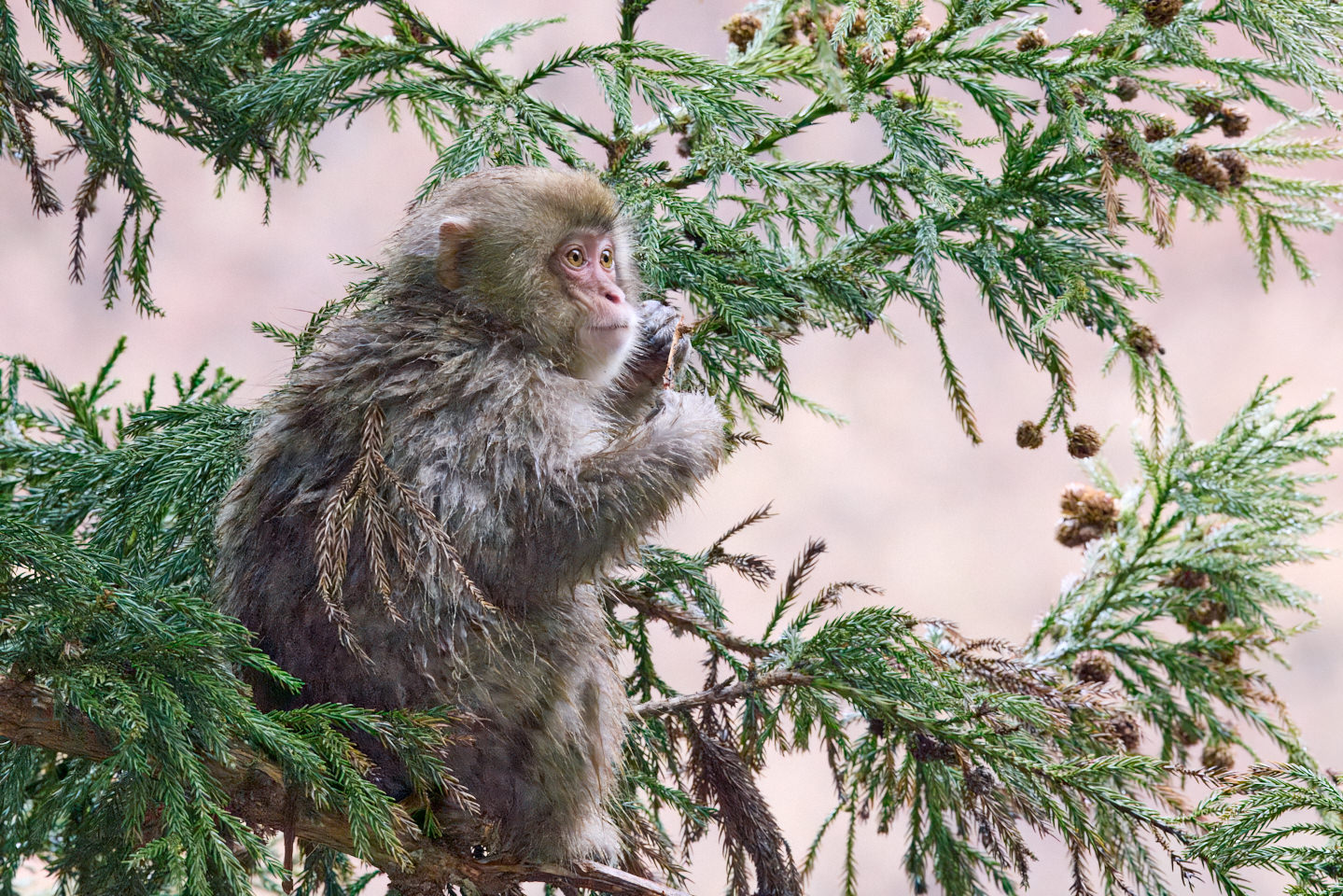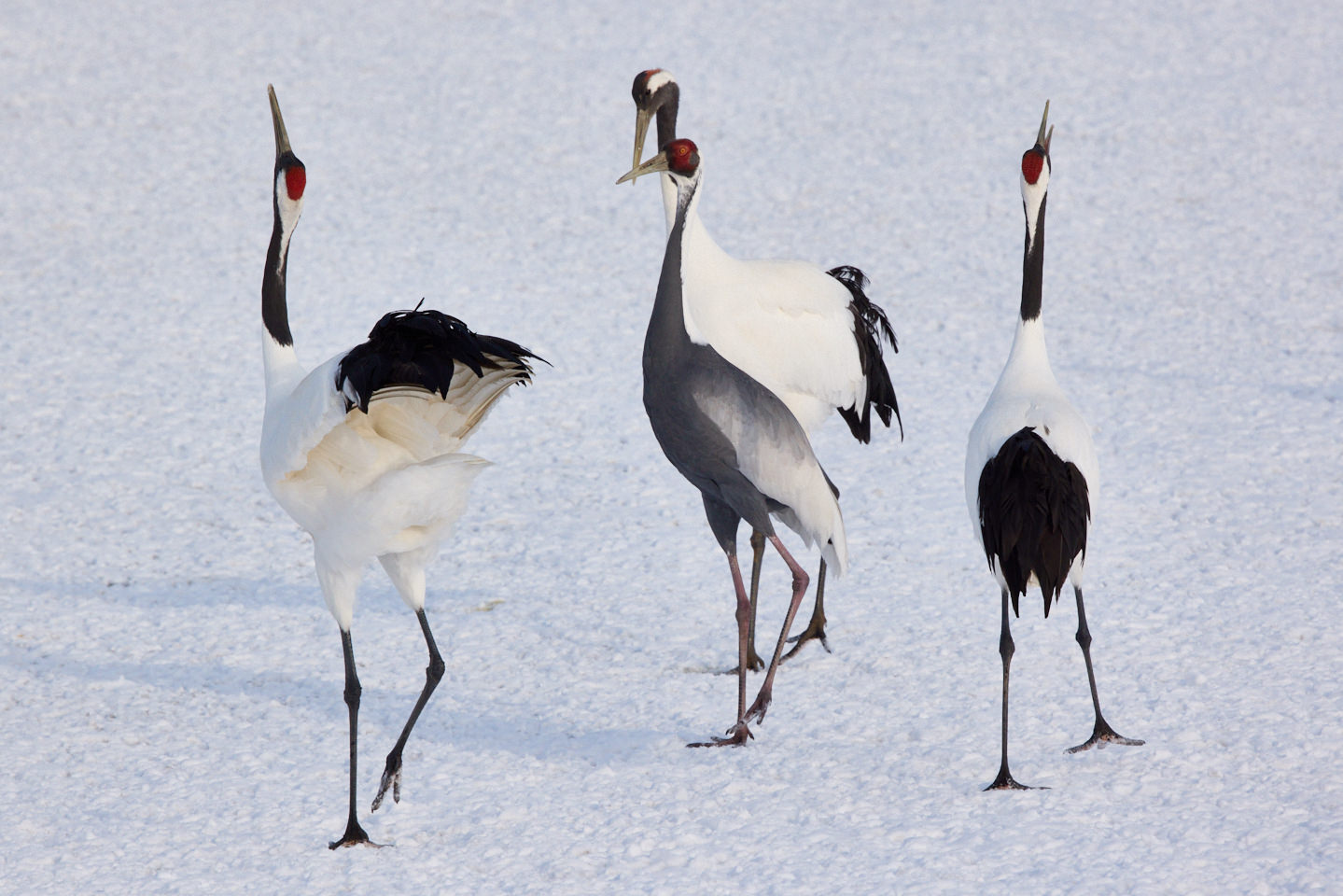Visit Library for MBP Pro eBooks |
OK, so almost five months after I finished these tours, today I’m going to walk you through our antics on the 2024 Japan Winter Wildlife Tours. Note that I’m talking in plural because this long after the tours have finished, I’ve decided to merge my images, select shots from the same locations on each tour, and do both together. Where it might be relevant, I’ll mention which tour it was, but in general, both tours were always pretty much the same, except for the fact that the timing of the second tour has now become pretty much unworkable due to the hordes of visitors for the last two weeks in February.
It’s become a jungle at some of the most important locations, and this is why I’ve dropped the second of my two Japan Winter Tours from 2025. There used to be minor benefits for the later dates, but that changed around 8 to 9 years ago, so if you are considering coming to Japan for the winter wildlife, don’t fixate on the last two weeks in February. It’s a mess now.
Anyway, as usual, we start with a trip to the Snow Monkeys in Nagano, which is now just a one-hour drive over the mountains in the summer from our new house in the Gunma prefecture. It will take longer to get there in winter, as the mountain roads are closed due to the heavy snow. I honestly don’t know what would happen in a year like 2024 because we had no snow on both visits. We were photographing just monkeys, not snow monkeys, and that made it somewhat challenging, but they are an amazing subject regardless.


What I like to do is focus on capturing their behavior and expressions, and the first shot for this episode is a good example. We sometimes find mothers cuddling their babies like this, and although this mother wasn’t sleeping, they do close their eyes from time to time, and it can make for a very relaxed atmosphere in the resulting photos. The baby was actually feeding, but we can’t see that from this angle.
To try and make the most of the lack of snow, I do try to line up the background with an area of low contrast as much as possible. As you might be able to see, there were some patches of snow on the valley walls between the patches of dark rock, and with an aperture of ƒ/8 the depth of field is shallow enough to make the background quite smooth anyway.
As usual though, when something, like the snow, is taken away, something else is granted in return, and I was pretty happy to get some shots like this one, of the monkeys in an environment that we wouldn’t usually see until the spring time. It’s great to see them just sitting in the trees surrounded by the evergreen needles. Even though these are evergreen, they are usually completely covered with snow, so this kind of image has never been possible on previous trips at this time of the year.
It probably wasn’t possible many years ago for another reason as well. I shot this image at ISO 40000 because it was relatively low light, and I increased my aperture to ƒ/14 to get more of the surrounding tree sharp. Granted though, I did run this through Topaz Photo AI to clean it up just a little bit. It was acceptable out of the camera, but Topaz made it better.
Here’s one last snow monkey shot before we head off to Hokkaido. This little guy was looking at his hand in the heavy mist that had formed around the hot spring pool there, that they are famous for bathing in. It was also raining big rain drops, which splashed back up in a few locations, but may be difficult to see in the web sized version.

This type of shot requires a lot of patience because you have to wait for a small pocket in the mist to move over the face of the monkey, but as the subjects only do something for a very brief time, it’s mostly luck that they do something at the same time as the pocket of clarity, so it can be pretty challenging to capture something you like.
Once we arrived in Hokkaido, we drove to the first place where we shoot the Red-Crowned Cranes, but as usual, some Whooper Swans were flying in and out of the reserve. There were patches of ground showing through the snow in places, as they hadn’t had a lot of snow here either, and the sun had been harsh, causing strong contrast light on the snow and the birds until a few minutes after I’d told my group that we should start to pack up soon and leave for our next location. Many were cold and ready to get warmed up on our bus and went into the ticket office to warm up earlier than necessary, but a new friend I made on this trip, and I were out on a hillock at the far end of the compound when the sky that you see behind the swans in this image started to look a little ominous.

Snow wasn’t forecast until the evening, and we were certainly hoping that would give us some good ground cover for the next day. However, literally just a few minutes after this shot, a squall blew through, with high winds and small pellets of snow, which excited the cranes and caused most of them to fly out of the reserve. As you can see from this image, the background was paler, and the trees were almost like ink paintings as these cranes flew towards a gap to the left of these trees, then over the river that runs behind them, in the direction of their roost.

It lasted maybe ten minutes. I turned to the participant, who was still out here with me, and in perfect synchronization, we both threw our arms out and gave each other a lung-squeezing man-hug. I don’t know about him, but I was almost in tears. It was such a magnificent moment, leaving us both filled with adrenaline.
We went to the Otowa Bridge the following morning, hoping to shoot the cranes in the hoar frost. It mainly was not happening, with dark trees and no mist, but a small patch formed in the nearby bank on the right side of the river, and as if to complete the scene, two of the cranes from the main group strolled down the river and into the mist. I could almost hear them talking about what a splendid morning it had turned out to be. This would be the only hoar frost we’d see this year. It didn’t happen on the second tour, despite the three to four rows of photographers jostling and arguing on the bridge for their tiny spice from which to shoot. I won’t miss that experience from next year on.

Later the same day, we were back at the Akan Crane Center, and I noticed a few birds close to the edge of the main reserve and the wind was blowing in the right direction to have some of them hop over the fence to the wild reserve on the right side, so I moved into place and was able to snag this shot, of a crane’s fuselage as it flew directly overhead. I had pulled my 100-500mm lens back to 100mm, and the framing you see here is straight out of the camera. There wasn’t much wiggle room at this focal length with a bird with a 2.5-meter wingspan flying overhead.

It would turn out that there would be no snowfall from the day before I shot the crane hopping over the fence to the day we got back to the Akan Crane Center 20 days later. Once again, there was no snow forecast while we were there, but just as we were getting ready to leave, we were treated to a small snowstorm. I love this shot of three cranes flying away from us, all with different wing positions and in beautiful, almost abstract, surroundings. If I hadn’t given up my large format printer during the move to our new house, this would be a definite candidate for a large print. As it stands now, I’m just hoping Canon releases an update for their A2 printer, as I don’t feel like paying for seven-year-old technology at this point.

Here’s a shot of a pair of Ural owls on a nest, with one on the right having a brief yawn. These are beautiful birds, too, but to protect them from those who think it’s OK to throw things at them to make them open their eyes, we have to shoot from very far away, using a 2X Extender.
To finish, here is a documentary shot of the White-Naped Crane, which spent the winter integrated pretty well into the Red-Crowned Crane colony in Tsurui. It was a little bit shorter in height and lighter, so scuffles that broke out usually resulted in him running away quickly, but otherwise, the Red-Crowned Cranes tolerated him very well. I even have a photograph of them flying out of the Itoh Crane Sanctuary together, which made me smile.


This concludes the cranes for this episode. In the next episode, we’ll cover the Whooper Swans at Kussharo Lake and the Sea Eagles at Rausu, so please stay tuned.
Show Notes
See future tours here: https://mbp.ac/tours
Subscribe in iTunes to get Podcasts delivered automatically to your computer.
Download this Podcast as an MP3 with Chapters.
Visit this page for help on how to view the images in MP3 files.


Hey Martin…
I really enjoyed listening to Part 1 of your Japan Wildlife Tour. For me, it was an opportunity to relive the experience. Your telling of the brief snow squall with the cranes brought a huge smile to my face… And yes, the need for a spontaneous “man-hug” was definitely mutual 🙂 See you in 2025… bruce
Glad you enjoyed the recollection Bruce, and I’m happy it wasn’t just me that needed that hug. I won’t forget that experience in a hurry.